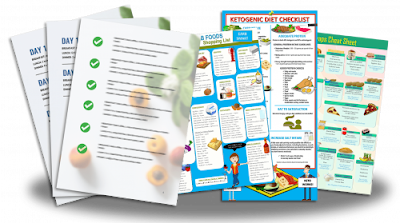How to lower your cholesterol?
- Get link
- X
- Other Apps
What is cholesterol?
Cholesterol is a waxy, fat-like substance found in every cell in your body. Your liver makes cholesterol and it is also found in some foods, such as meat and dairy products. Your body needs some cholesterol to function well, but having too much cholesterol in your blood increases your risk of coronary artery disease.
Cholesterol is a waxy, greasy-looking substance found in the cells of the body. Our body uses it to produce hormones, vitamin D, and other elements that help digestion.
Cholesterol is very common and is found in various foods. Some of the best-known foods high in cholesterol are egg yolks, meat, and cheese. Although cholesterol is an essential component for the functioning of our body, excess levels can cause some problems.
High cholesterol can sometimes be hereditary, but it is often a product of our life choices, especially when it comes to diet. According to the Mayo Clinic, the main causes of high cholesterol are a lack of activity, obesity, and unhealthy eating. The good news is that all of these factors can be controlled.
Even though it can be a daunting subject, cholesterol can be reduced with a few minor lifestyle adjustments. The most significant change to lower cholesterol is in the diet.
Your risk of developing heart disease and having a heart attack is increased by high cholesterol. Your cholesterol may be improved by medications. Try these five healthy changes, though, if you would prefer to alter your way of life first to lower your cholesterol.
What is high blood pressure?
Low-density lipoproteins (LDL) and high-density lipoproteins (HDL) carry different kinds of cholesterol, respectively. They are made up of a mixture of proteins and lipids. Additionally, individuals with diabetes also have elevated triglyceride levels. They are discovered during studies and represent yet another significant component of cholesterol.
The term HDL refers to the so-called "good" cholesterol. Cholesterol travels to other areas of the body before it reaches the liver. LDL is frequently referred to as "bad" cholesterol. This prevents the liver from receiving cholesterol.
In contrast to HDL, LDL can lead to plaque development and a buildup of cholesterol in blood vessels. Plaques are made up of a combination of fat, cholesterol, and other substances. An excessive buildup of plaque is dangerous because it narrows the arteries and, if left untreated, can lead to serious problems with the heart and other organs. r organs. Blood flow to the kidneys, brain, arms, and even legs is reduced as a result of this excess.
Smoking, getting older, having diabetes, and not exercising are additional risk factors for having high LDL levels. Food can cause cholesterol to accumulate because our bodies produce it.
The greatest impact on cholesterol increases comes from foods high in trans fat, sugar, and salt. These products include, among others, butter, cakes, canned soups, fast food, and soft drinks. There are lots of heart-healthy alternatives that help reduce cholesterol.
Diet is crucial in the prevention and management of high levels of triglycerides and cholesterol (hypertriglyceridemia). Learn which foods to eat and which to avoid to maintain your weight at the levels advised by the experts.
Essential foods that lower cholesterol:
legumes
Multiple types and colours of beans and lentils spill out of jars and bowls
Legumes belong to a group of plants that includes beans, peas, and lentils. They provide essential minerals and nutrients, such as fibre and protein. Soybeans, peas in pods, chickpeas, and mesquite are some examples of legumes.
Legumes such as soybeans, lentils, and peas provide you with a good level of vegetable protein and fibre, increasing HDL (good cholesterol) and decreasing bad cholesterol (LDL), and are perfect foods to lower cholesterol.
A recent study revealed that eating ½ cup (100 grams) of legumes a day helps lower LDL, or “bad” cholesterol, compared to not eating these foods.
There are a wide variety of legumes, from black beans to peanuts, and they are easy to incorporate into your diet to lower cholesterol.
avocados
Nutrient-dense and highly versatile, avocados are a great superfood that lowers cholesterol and offers other health benefits. They contain two essential nutrients to lower cholesterol: fibre and unsaturated fats.
Fibre helps to remove cholesterol from the body and digestive system before it is absorbed, which is essential for a healthy digestive system. About 10 grams of fibre, or about one-third of the daily recommended amount, can be found in one cup of avocado.
A group of obese adults with high LDL cholesterol consumed one avocado daily in a study by the American Heart Association. Adults who consumed avocados significantly reduced their LDL levels compared to those who did not.
Avocados are a healthy fat that can be used in place of any other fat that raises LDL levels.
Nuts
Although they occasionally receive a bad rap, nuts are among the best foods to eat to lower cholesterol. In addition to their ability to lower LDL levels, they have many other nutrients that contribute to overall health.
Walnuts and almonds are particularly important for food. Walnuts are rich in omega-3 fatty acids, and almonds contain high levels of amino acids that regulate blood pressure and protect the heart. Rich in heart-healthy minerals as well as cholesterol-lowering fats and fibre, they're an excellent snack to naturally lower LDL levels. The serving size for walnuts and almonds is ¼ cup, which is about the same as a handful of these nuts.
fatty fish
Oily fish are perfect for the heart and for those with diabetes, as they are rich in omega-3 fatty acids. These nutrients protect the heart by increasing the amount of HDL cholesterol and fighting inflammation. Remember that HDL is the “good” cholesterol.
Oily fish provides Omega-3, which is beneficial for cardiovascular health since it reduces blood pressure and the appearance or development of blood clots.
Salmon, tuna, trout, and herring are a few examples of fatty fish. The way fish Fish preparation is just as crucial to health as the product itself. To cook fatty fish, broil, grill, or steam it. Broiling, grilling, or steaming fatty fish are the best methods of preparation. Fish that is fried loses some of its nutritional value and adds unnecessary fat to the meal. mal serving of fatty fish is 100 g, which is equivalent to ¾ cup.
berries and fruits
Fruits and berries, which are essential components of any wholesome diet, are great sources of natural cholesterol-lowering nutrients. Fruits and berries are frequently rich in soluble fibre, which lowers LDL cholesterol levels, according to a Tulane University study.
One of these soluble fibres, pectin, lowers cholesterol by up to 10%. This magnificent nutrient is present in fruits such as apples, grapes, oranges, strawberries, and citrus fruits.
Oatmeal
Oatmeal is the number one cereal and helps lower cholesterol. It has soluble fibre and reduces LDL circulating in the blood. In addition, it contributes to intestinal transit. Its consumption is recommended in the morning, and preferably when the cereal (oats) is cooked. The ideal dose is one and a half cups.
In general, fruits are excellent for the heart. They often contain bioactive compounds that help prevent heart disease and many other chronic inflammation-related diseases. Berries are particularly rich in these compounds, greatly reducing blood LDL levels and promoting healthy HDL levels.
The serving of berries is usually 1 cup, while the serving of fruit, such as apples or bananas, is 1 unit.
Dark chocolate and cocoa powder
It is proven that dark chocolate offers different health benefits because it is rich in fibre, iron, magnesium, and antioxidants that contribute to the health of the body in general.
A study conducted on cholesterol levels in men revealed that cocoa powder significantly reduced the amount of oxidized LDL. For study participants with high cholesterol, cocoa powder lowered LDL levels and raised HDL levels.
Some kinds of dark chocolate and cocoa even have more antioxidants than certain fruits or berries, making them a great snack if you have a sweet craving. Dark chocolate is also good for the brain and is a great option for improving memory.
However, it is crucial to moderate your consumption because too much food can be detrimental to your health.
Garlic
For centuries, people have used garlic as food and medicine all over the world. Allicin, which is its primary constituent, is among the significant plant compounds present.
Numerous studies show that garlic lowers the body's total cholesterol levels. These same studies also demonstrate that the effects of garlic are transient and that further research is needed to determine its true cardiovascular benefits.
As a result, significant amounts are required for garlic to have a positive impact on cholesterol. As a result, age supplements have frequently been used in studies with quantifiable outcomes.
Avoid taking supplements unless your doctor instructs you to. Choose healthier foods that lower or moderate cholesterol levels instead of taking garlic supplements. For the heart, it is essential to know the foods that reduce cholesterol and those that increase it. Learn how to get sound sleep if you want to know how to keep a healthy heart.
And if none of these suggestions works to lower cholesterol?
It is frequently insufficient to lower cholesterol to the recommended levels with diet and exercise alone. You can consult the pharmacy for supplements that have been shown to reduce cholesterol by up to 30%. If all of this fails to lower cholesterol, a trip to the doctor is required, who will issue the prescription for the drug he believes is best to achieve a "normal" value. These conditions typically require long-term treatments and chronic medication is frequently required.
Please click the link below to learn more about your health, and you should find it helpful:
https://www.digistore24.com/redir/307885/sundaramvkl5619/
- Get link
- X
- Other Apps



Comments
Post a Comment